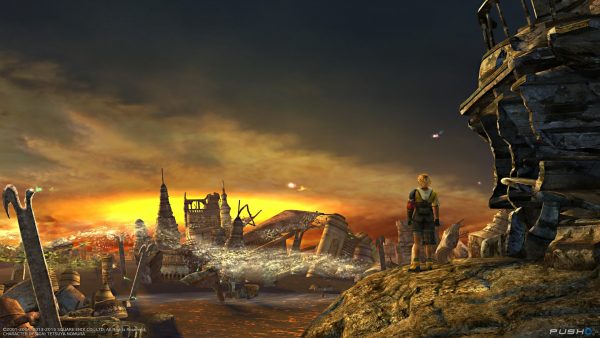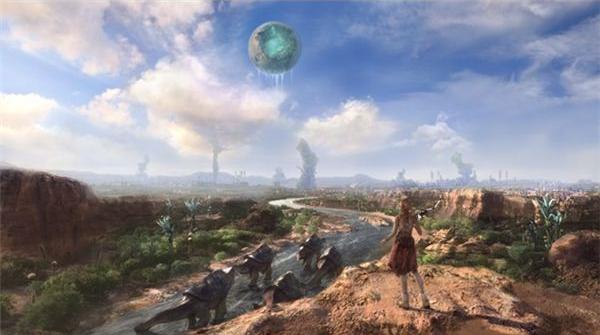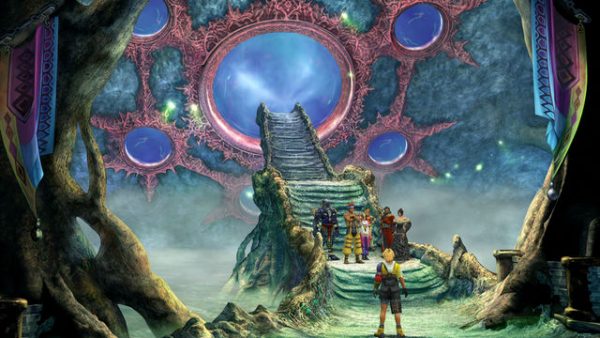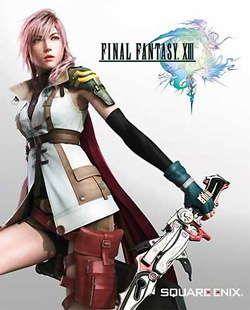While the Ancient Lands that are floating around in my head is a pretty great place (yeah, the actual writing isn’t really comming along that well so far) it often feels to me like it’s still missing a certain something. Worldbuilding at the drawing board is a technical task of deliberate consideration and choice, and while it’s a wonderful assembly of parts, it is lacking life. What I really need is that spark of emotional value that can make it truly ignite.

Project Forest Moon was my first attempt to really give the setting an aesthetic core, and seeing how often I am refering back to that post it apparently was a very successful one for me. The Empire Strikes Back and Return of the Jedi both defined by inner ideal of fantasy atmosphere with Endor, Bespin, Dagobah, and also Jabba’s Palace. (While I also love the atmosphere in several parts of Mass Effect, those are actually just recapturing that Star Wars magic very well.) Obviously, I also love Morrowind as a main source of idea, but the actual game itself feels much more bland and lifeless than it looks on pictures, just like the other Elder Scrolls games.
But today I somehow ended up listening to some samples of the soundtrack of Nier: Automata (still have not even played the first game) and I really quite like it. It really very much reminds me of the music from the last Final Fantasy games, which now actually brings me to todays topic.

I only played Final Fantasy 10 up to and failing at the final boss, finished Final Fantasy 13, played a couple of hours of Final Fantasy 7, which I found very much lacking, and tried out the beginning of Final Fantasy 12. So in the eyes of true fans, I probably don’t actually know shit about real Final Fantasy games. But while I have not seen much of 12 and 13 has some really big problems in the gameplay and story department, from an aesthetic perspective I really like them and 10. Sure, they are cheesy and overly dramatic, and not in a fun camp way, but the visual and aural presentation of the world outside of combat and cringy dialogs is really working for me. It hits that Star Wars nerve and actually does so a bit stronger than even Star Wars.

These environments are like 70s Sword & Sorcery art brought to life with light and sound that you can walk around in. The games also manage to create the impressions that these worlds are vast and also almost uninhabited, which is another thing I really like and that you rarely find in contemporary fantasy anymore. Books have huge numbers of characters and countries, while videogames are forced to cram all their content into very dense spaces because of their technical limitations. By not having an open world like The Elder Scrolls, The Witcher 3, or Horizon, Final Fantasy games can show vast landscapes stretching to the horizon that only have to look good from one perspective. But the inherent flaws of the open world videogame concept are a completely different discussion.
 But another thing I think Final Fantasy gets right is that these worlds don’t feel like they could have been alternative Earths if magic were to replace technology. You can buy them as alien planets on which magic doesn’t exist besides physics but is inherently interwoven with it. Magic doesn’t just express itself in spells, magic items, and demons, but also in the shape of the terrain, the growth of forests, and the anatomy of impossible animals. Which are all things that I’ve consciously decided to have being part of the Ancient Lands, but which in the past I didn’t really feel being part of it. When writing the setting as a readable text, this is something that really needs to be woven into the subtext and the style. A technical listing of the parts that constitute the setting won’t be enough to really make it what I want it to be.
But another thing I think Final Fantasy gets right is that these worlds don’t feel like they could have been alternative Earths if magic were to replace technology. You can buy them as alien planets on which magic doesn’t exist besides physics but is inherently interwoven with it. Magic doesn’t just express itself in spells, magic items, and demons, but also in the shape of the terrain, the growth of forests, and the anatomy of impossible animals. Which are all things that I’ve consciously decided to have being part of the Ancient Lands, but which in the past I didn’t really feel being part of it. When writing the setting as a readable text, this is something that really needs to be woven into the subtext and the style. A technical listing of the parts that constitute the setting won’t be enough to really make it what I want it to be.

